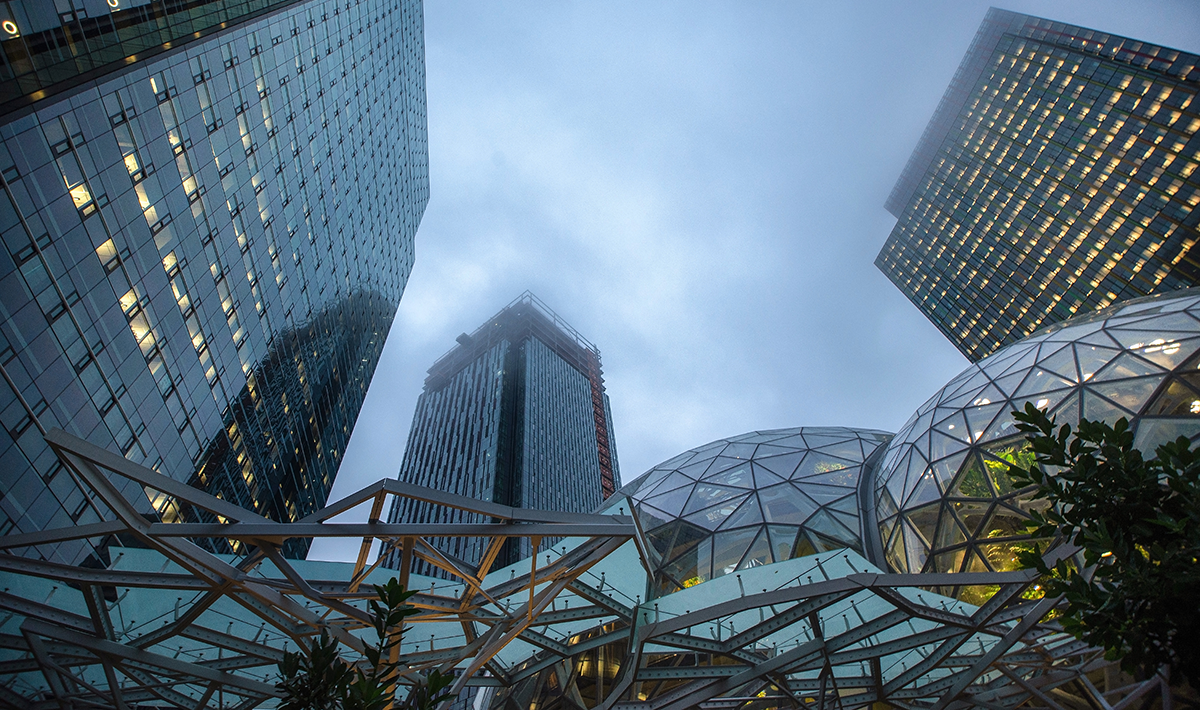Resolving Common Construction Ailments with High-Performance Coatings
When it comes to our bodies, it can take just one little thing to bring us down for the count. Not taking good care of yourself, especially when you have some kind of nagging ailment, often leads to disaster quickly. In fact, most doctors will tell you that the best way to stay healthy is through preventative measures – like diet and exercise – that keep your body at its best so it’s better prepared to fight off any conditions that can (and will) arise.
As an architect, you know that the decisions you make on a project can affect the long-term results of the building at hand. Much like a body, a great design can ultimately be thwarted by a single flaw in the structure – especially if not controlled early on. From structural steel to lighting, flooring to glazing, each facet of a new or renovation construction project comes with a myriad of decisions that need to be made in order to ensure that your design is (best-case scenario) capable of outlasting its expected life-cycle.
One such factor that should be considered to help limit the possibility of a rapid-growing ailment in the designed structure is paint. Or, more specifically, high-performance coatings. Sometimes overlooked and often under-specified, coatings can protect structures from a wide variety of issues, including corrosion, UV light, and even mold/mildew. To help you and your buildings, let’s review some common treatments that coatings can provide to prevent widespread issues.
Corrosion
This is a big one. More commonly discussed in industrial environments but still rampant in commercial architecture, too, corrosion is a natural chemical (or electrochemical) reaction that happens to all building materials, especially metals. While there are many different ways that coatings can fight corrosion, one of the most popular – and effective – methods is by way of a zinc-rich primer.
Unlike epoxy primers, which provide a barrier between steel and atmospheric conditions, zinc-rich primers offer something beyond barrier protection. Zinc-rich coatings offer cathodic protection to steel, sacrificing themselves for the good of the surface beneath.
An unsung hero of many projects, zinc-rich primers have been proven to last while some also offer several other benefits, like a long recoat window which allows the coating to be applied in the shop and then touched up and top-coated in the field once the steel is delivered and erected at the job site.
Abrasion & Repeated Cleaning
When designing interior surfaces, consideration should be given to whether or not the floors and walls will be bumped, battered and/or frequently washed. If the answer is yes, and often, a high-quality coating system should be specified.
Resinous flooring systems, such as quartz-filled floor coatings, are often used in kitchens, locker rooms, pharmaceutical facilities and other areas where daily washdowns and thermal shock are a concern. By providing a seamless, monolithic surface, these floor coatings can be easily cleaned while also offering aesthetic appeal and abrasion-resistance.
Likewise, walls in similar areas can utilize fiberglass-reinforced coating systems to eliminate the seams often found in materials such as tile and fiberglass-reinforced panels (FRP). These coatings are seamless and easy to clean while being less likely to chip and peel like standard interior paints.
UV Light Degradation
Often called “weathering” or simply “fading,” the effects of ultraviolet (UV) light can make a building look…well, terrible. Plus, as light and exterior weather begin to break down the chemical and physical properties of a coating, greater problems can arise, especially the little corrosion thing mentioned earlier.
The best defense against UV light degradation is the protection of a coating finish with extended color and gloss retention, especially a high-quality polyurethane or fluoropolymer finish. Fluoropolymer coatings can last 15+ years without visible loss of color and gloss levels, making them the best option when maintenance will prove to be difficult, like on a high-rise building or an intricate sculpture.
Thermal Bridging & Condensation
Yes, some coatings are designed to help limit the effects of thermal bridging and condensation inside of the building envelope. These fluid-applied, non-structural thermal breaks can be applied in the shop or in the field (or both) at all exterior-to-interior thermal bridges.
Many architectural firms around North America are beginning to specify these coatings based on their performance and ease of use. More cost-effective than structural thermal break pads or shims, these insulating coatings can be applied over existing primers and can also be top-coated with high-performance finishes wherever necessary.
Maintenance & Renovation
Coating existing structures brings with it a whole mess of new issues. Coating/recoating in occupied spaces and the expense of complicated surface preparation are among the greatest concerns, but coating products exist that can help alleviate these problems.
One such product is an acrylic mastic, which offers high-build and elastomeric properties that allow the coating to overcoat minimally prepared surfaces, even when covered with old paint and tightly adhering rust. To add to its convenience, some acrylic mastics can “dry-fall” in ideal conditions, meaning that any overspray can be wiped clean from nearby structures, vehicles or equipment.
Other Things to Consider
The bad news is that coatings, like other facets of a project, can get complicated. Depending on the project, some of these coatings may need to meet qualifications for green building initiatives like LEED, or comply with air district restrictions like those put forth by the South Coast Air Quality Management District (SCAQMD). Also, certain coatings are not compatible with other coatings, so you may need to consider alternative solutions based on what is already on your structure or in your master specification.
The good news: there are plenty of resources. Your best bet is spending some time speaking with a local coating professional when it comes time to specify or apply high-performance coating systems. Reach out to AIAS or Tnemec to get in touch with someone in your area and make sure your project stays healthy, now and into the future.










